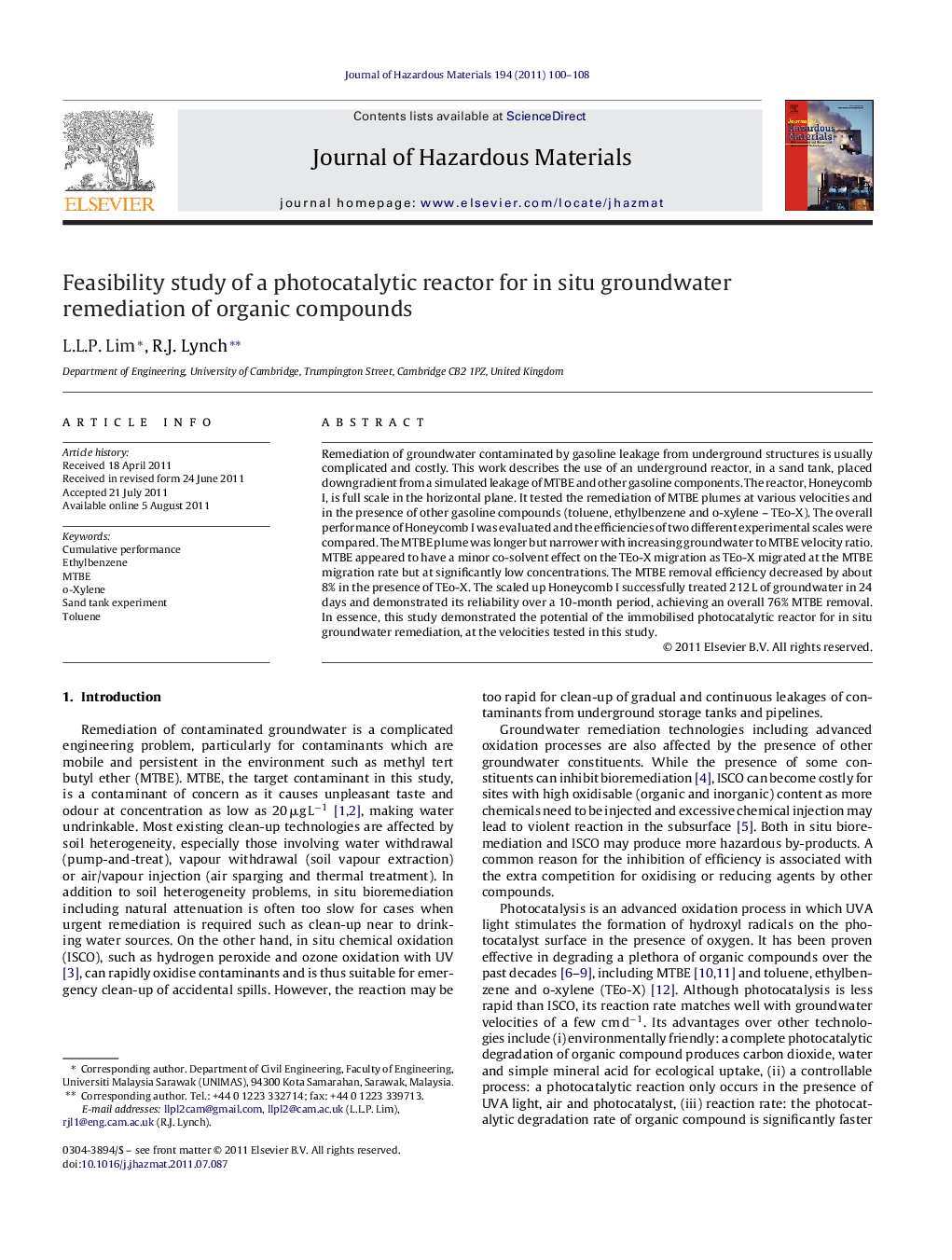| Article ID | Journal | Published Year | Pages | File Type |
|---|---|---|---|---|
| 579094 | Journal of Hazardous Materials | 2011 | 9 Pages |
Abstract
Remediation of groundwater contaminated by gasoline leakage from underground structures is usually complicated and costly. This work describes the use of an underground reactor, in a sand tank, placed downgradient from a simulated leakage of MTBE and other gasoline components. The reactor, Honeycomb I, is full scale in the horizontal plane. It tested the remediation of MTBE plumes at various velocities and in the presence of other gasoline compounds (toluene, ethylbenzene and o-xylene - TEo-X). The overall performance of Honeycomb I was evaluated and the efficiencies of two different experimental scales were compared. The MTBE plume was longer but narrower with increasing groundwater to MTBE velocity ratio. MTBE appeared to have a minor co-solvent effect on the TEo-X migration as TEo-X migrated at the MTBE migration rate but at significantly low concentrations. The MTBE removal efficiency decreased by about 8% in the presence of TEo-X. The scaled up Honeycomb I successfully treated 212Â L of groundwater in 24 days and demonstrated its reliability over a 10-month period, achieving an overall 76% MTBE removal. In essence, this study demonstrated the potential of the immobilised photocatalytic reactor for in situ groundwater remediation, at the velocities tested in this study.
Keywords
Related Topics
Physical Sciences and Engineering
Chemical Engineering
Chemical Health and Safety
Authors
L.L.P. Lim, R.J. Lynch,
